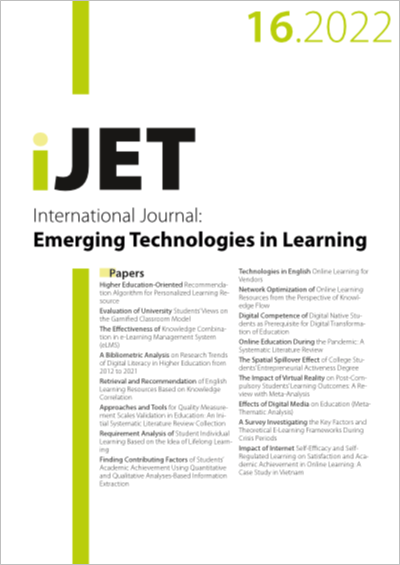The Effectiveness of Knowledge Combination in e-Learning Management System (eLMS)
DOI:
https://doi.org/10.3991/ijet.v17i16.31873Keywords:
Knowledge management, Combination, Explicit Knowledge, Tacit Knowledge, e-Learning Management System (eLMS)Abstract
Information and Communication Technology (ICT) play an important role in maintaining Knowledge Management (KM) processes, because of the potential significance of knowledge management in improving the performance of higher educational institutes in particular. KM is acquiring increased relevance as a topic worth exploring. e-Learning Management System (eLMS) has been recognized and known as effective and powerful in supporting teaching and learning opportunities around the world as well as being a method of delivering education, knowledge and flexibility to higher education institutions, eLMS has been a significant step forward in the evolution of knowledge management systems.Thus, the purpose of this empirical study was to see how effective knowledge combination in eLMS is among Iraqi students. A survey research approach was adopted to achieve these goals, with a sample of 109 undergraduate students from Iraq's College of Information Technology, all of whom were actively participating in eLMS activities. The initial result showed that the knowledge can be productively transferred from teachers and lecturers to students via eLMS. Furthermore, eLMS enable students to increase their knowledge through the combination process, also students are able to integrate and use multiple knowledge sources to enhance their learning process.
Downloads
Published
How to Cite
Issue
Section
License
Copyright (c) 2022 Zahraa Abed Aljasim Muhisn, Saif A. Almansouri, Sinan Adnan Muhisn , Mazida Ahmad , Mazni Omar

This work is licensed under a Creative Commons Attribution 4.0 International License.


